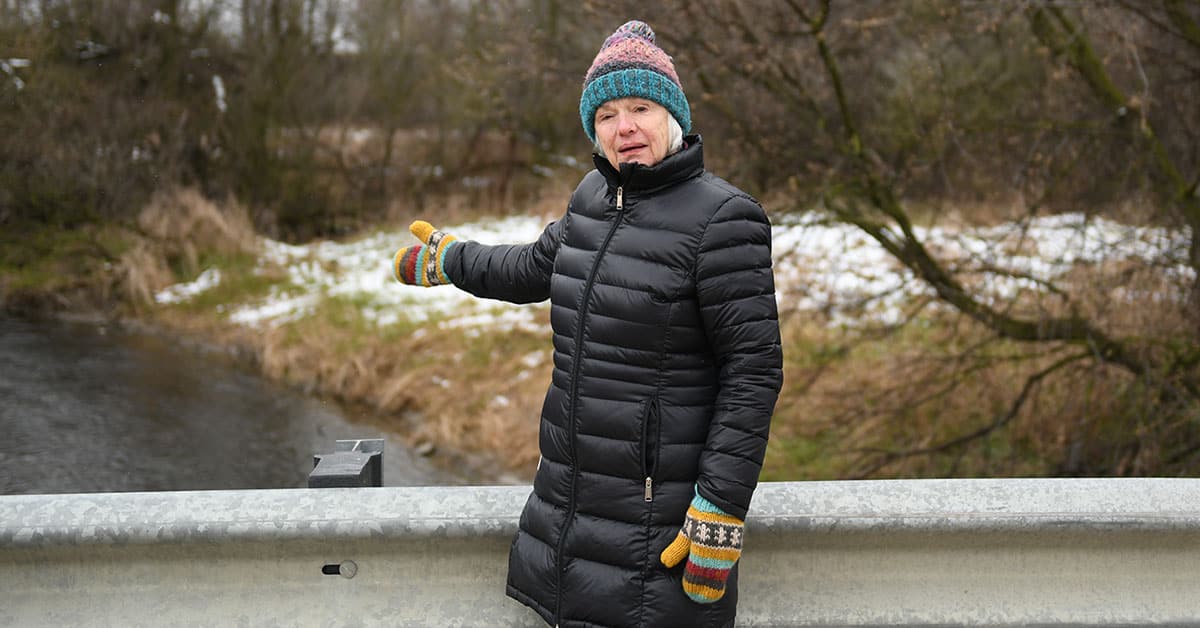A recent report from the Lanxess chemical manufacturing facility says the risk to humans from legacy chemical waste in Canagagigue Creek is at an acceptable level.
Lanxess released a draft human health and ecological risk assessment for the Canagagigue Creek earlier this year.
The document identifies the chemicals of concern in the creek and its floodplain, the toxicity of the chemicals, how they move, and who or what could be impacted by them. Geographically, it covers the creek’s floodplain from the Lanxess chemical plant, and down the creek to where it empties into the Grand River.
“Most importantly, the results show that there is no adverse impact to human health. Ecological risk assessment showed the potential for adverse impact in two localized areas,” said Michael Mackin, a spokesperson for Lanxess, in an email to The Observer.
The draft risk assessment says the levels of risk to human health in the creek are acceptable, according to Ministry of Environment guidelines.
The document also shows there is possible unacceptable risk to the health of small mammals and birds in the two reaches of the creek closest to the facility.
This is because birds and mammals eat smaller organisms like worms and slugs that have been exposed to these chemicals which can bioaccumulate in the birds and small mammals, said Mackin.
“To better understand the actual risks presented in those two localized areas, Lanxess will complete additional sampling in those spots, including additional soil for lab analysis as well as sampling of organisms (like worms) that may serve as food for the potentially affected birds and nearby mammals,” he said, noting the work is expected to take place in the second half of 2022.
The risk to these mammals and birds is largely influenced by the presence of hotspots, areas in the creek where the concentration of chemicals in the sediment is much higher than the surroundings, and higher than safely allowed by the province. In at least one instance, a sample in reach two of the creek tested more than a thousand times higher than the provincial limit, which was shown in a report from 2017.
Susan Bryant, a community member of the Technical Advisory Group (TAG), has advocated for the creek’s cleanup for more than 30 years. In particular, she advocates for the cleanup of these hotspots.
She said she is concerned that staff with Lanxess and its consultants assume land use in the reaches of the creek closest to the facility will never change and that possible human contact with the creek in this area will always be in an industrial setting.
While the amount of possible exposure to the chemicals in the creek and its basin in this area is acceptable for the population and use of the land now, land-use could change in the far future, especially in Waterloo Region, which is one of the fastest growing and changing areas in North America, she noted.
“It’s not accurate to assume the land use will never change,” said Bryant.
The chemicals do not break down and can accumulate in the tissue of organisms. That’s why she wants to ensure the hotspots are cleaned up.
Wilson Lau also sits on the Technical Advisory Group. During last week’s Remediation Advisory Committee (RAC) meeting, Lau said members of the group identified potential inconsistencies in the rational Lanxess used in the risk assessment. The Remediation Advisory Committee is a wider group of interested stakeholders who advise and keep informed on the chemical contamination in Elmira.
Lau says these questions will be included in the committee’s comments on the draft risk assessment to Lanxess.
At previous meetings, Lau expressed concern about the assumptions made regarding the use of the land by the Mennonite families who live along the creek. This includes eating food produced directly from the land like garden produce, eggs, poultry or livestock.
“We are in the process of preparing the Technical Advisory Group’s comments that will request some additional analysis of the existing data to ensure our concerns are comprehensively addressed,” said TAG chair Tiffany Svensson in an email, adding the group will be submitting these comments to Lanxess in the next four to eight weeks.
Ministry of Environment staff are expected to submit comments to Lanxess by the end of May.
The next steps Lanxess will take include waiting for the comments from the Ministry of Environment and the Technical Advisory Group, and incorporating this feedback into the next version of the risk assessment.
As well, further samples and tests of the chemicals will be done in the soil and in the area’s invertebrates (such as worms, slugs, etc.) to further understand the risk.
Lanxess owns and operates a chemical plant in Elmira. For decades, previous owners had improperly stored and dumped toxic chemical waste, including directly into the creek. This resulted in deposits of toxic and bioaccumulative chemicals in the creek. Other toxic chemicals seeped into the aquifer below Elmira, which supplied drinking water to the town until they were detected in high quantities in 1989.









